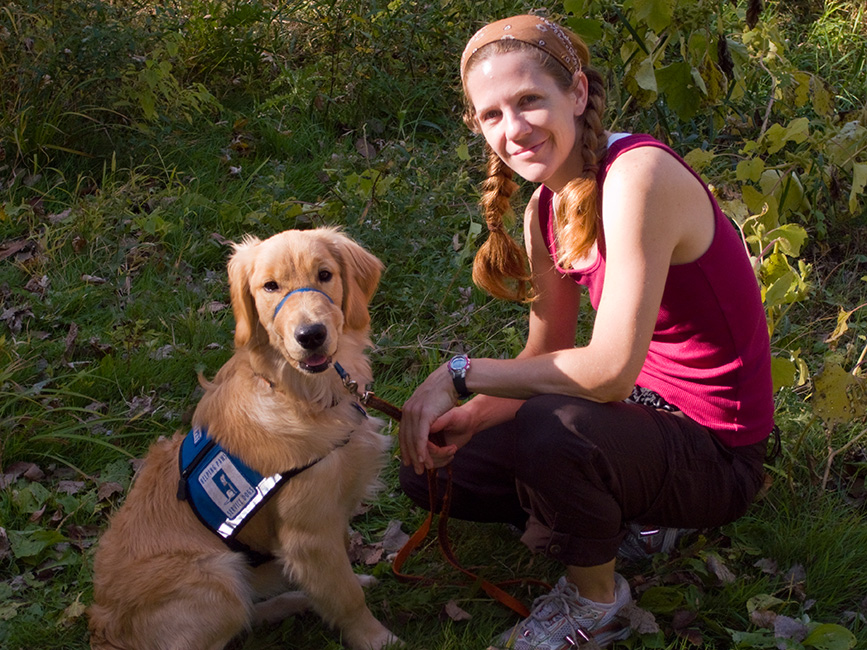Seva will go to someone with a physical disability. As we get into more advanced skills, I have to ask more of her and do less myself. This means, to help with Seva’s training, I have to imagine I have a disability. Like method acting, I think of this as method training.
I’ll give some examples.
A lot of graduates (that’s what Helping Paws calls the people who receive the dogs) don’t have very good manual dexterity. It’s hard to grasp and hold objects in their hands. So, if I’m pretending I don’t have good manual dexterity, when Seva retrieves an object and doesn’t quite get it in my hands, I let it fall and ask her to retrieve it again. Right now, she is learning to hold something in her mouth without chewing or dropping it while I pretend I can’t quite get hold of it and touch her muzzle before finally taking the object.
Some graduates are partially paralyzed. If I drop my keys between my feet, I pretend my feet are paralyzed and let Seva figure out how to get the keys without any help from me.
Some graduates are ambulatory, but need support. When we train on a staircase, I tell Seva to “Step,” and she places her front paws up (or down) one step, then waits while I use her as a brace to bring myself up (or down) that step. I don’t really need her for support, but I put some weight on her so she knows what it feels like to be used as a brace.
We use wheelchairs at the training center so the dogs get used to walking beside them. One day, we put tennis balls behind our backs. We had to hold the balls in place, which meant we couldn’t lean forward to hold out a hand to our dogs. They had to get each item they retrieved in our hands, even if our knees or the chair’s wheels were in the way.
The dog packs have a belly strap that buckles. Sometimes, I sit in a chair and make her bring me her pack. Then I hold it out and Seva has to walk through the chest strap without any help (like making the opening wider). Then she has to rise onto my lap so the buckle is easier for me to reach. When she gets dressed this way, I’m teaching her to adapt to my needs, instead of doing it the same way every time and establishing a pattern of how much—or how little—she has to do to get dressed.
As I train Seva and work through many of the ways her help could be needed, I’m reminded how fortunate I am to be able to take my mobility for granted.


Beautiful Blog. Yes, it is so easy to take mobility and health for granted. You and Seva are doing a wonderful thing together.
Thanks, Susan. We appreciate the encouragement!